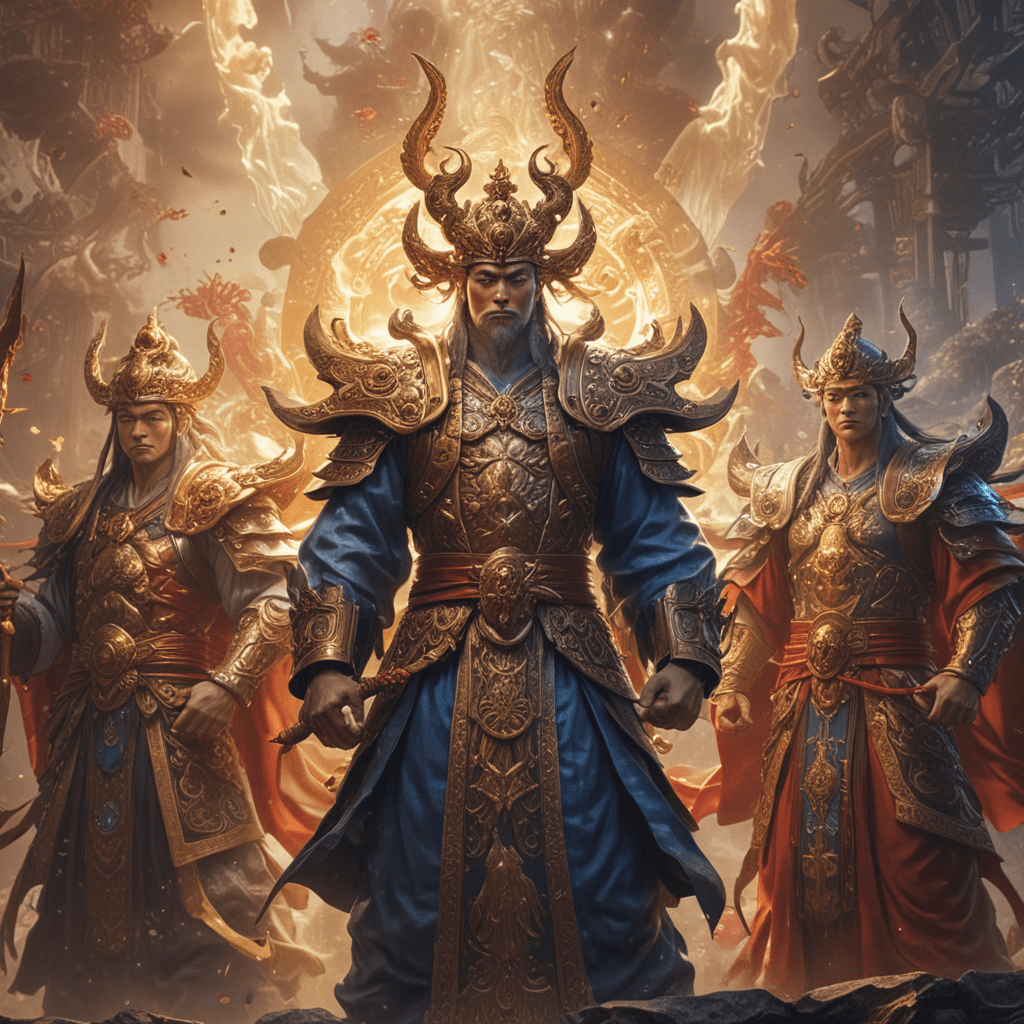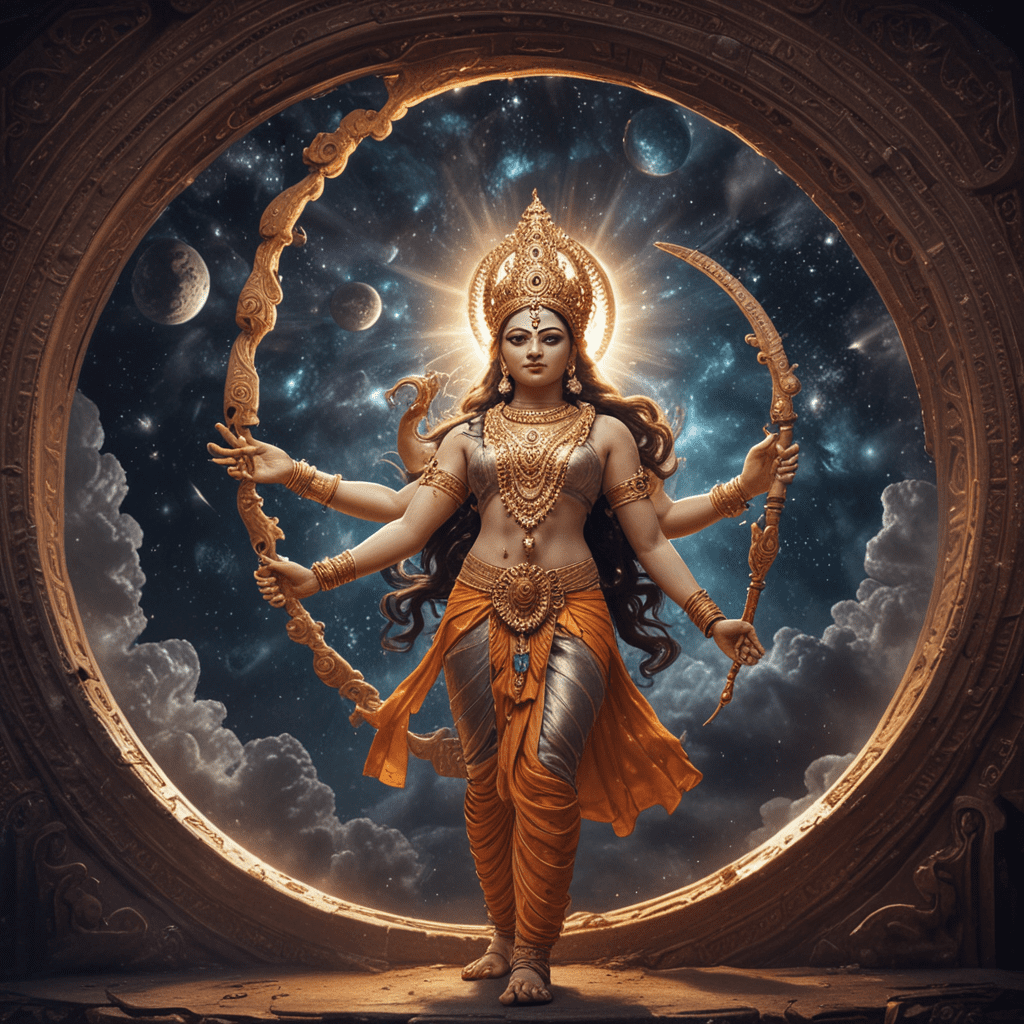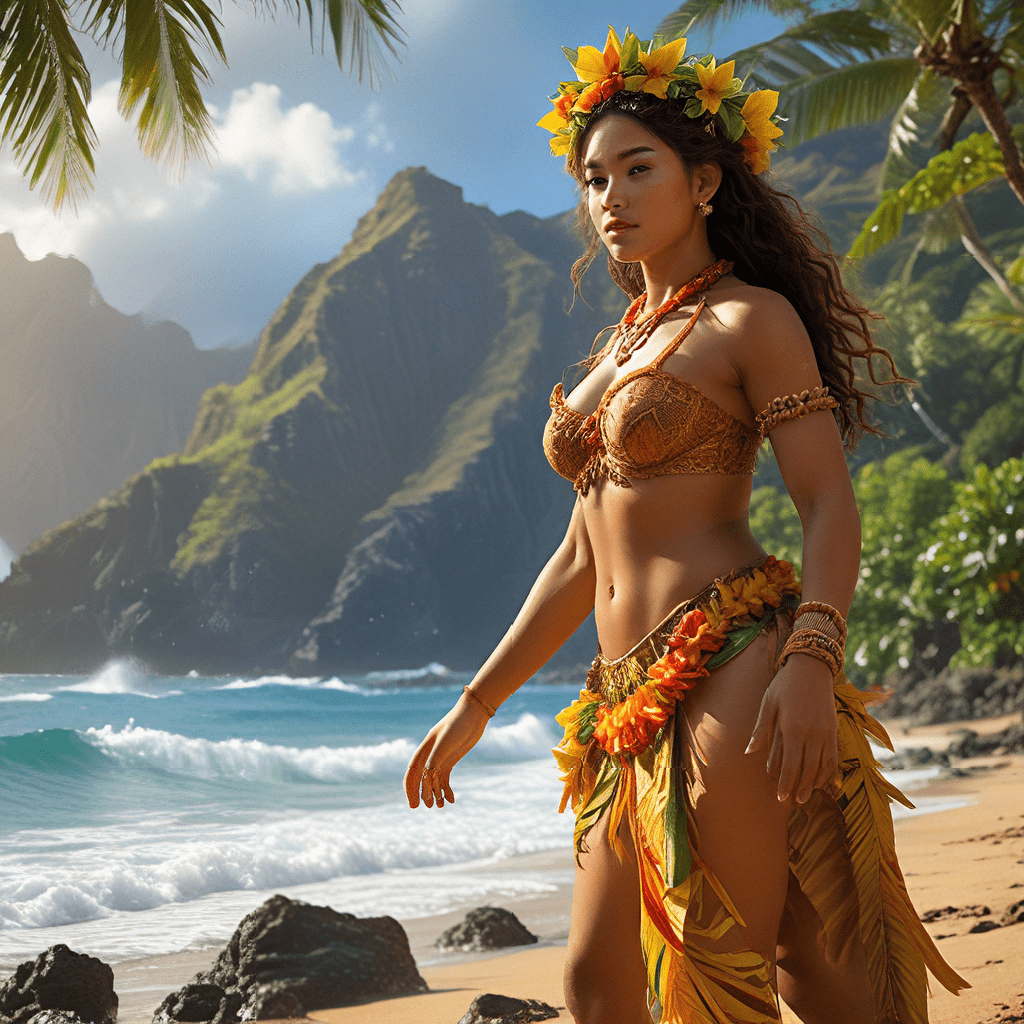The Legend of the Four Heavenly Kings in Chinese Mythology
Chinese mythology is replete with captivating tales and intriguing deities, among which the legend of the Four Heavenly Kings holds a prominent place. These revered guardians watch over the cardinal directions of the cosmos, symbolizing protection, defense, and order. Their origins and history are deeply intertwined with Buddhism, their roles and responsibilities are meticulously defined, and their presence has left an indelible mark on Chinese culture.
Origin and History
The concept of the Four Heavenly Kings emerged from ancient Buddhist mythology, particularly the Mahāyāna tradition. Originally known as the Lokapalas or "Guardians of the World," these deities were believed to protect the four corners of the universe from evil spirits and ensure the safety of the faithful. As Buddhism spread eastward into China, the Lokapalas were assimilated into Chinese mythology and adapted to fit the local cultural context. They became known as the Si Da Tian Wang, or "Four Great Heavenly Kings," and each was assigned a specific direction and domain.
Roles and Responsibilities
The Four Heavenly Kings play a crucial role in maintaining the balance and harmony of the universe. They guard the celestial gates and protect the world from malevolent forces. Each king is associated with a specific element, color, and animal, and they are often depicted in elaborate armor and wielding powerful weapons. Their responsibilities extend beyond the physical realm, as they also protect the teachings of Buddhism and promote virtue among mortals.
The Northern Heavenly King: Virūḍhaka
Virūḍhaka, the Northern Heavenly King, is known as the "King of the Yakshas." He is associated with the element of earth, the color blue, and the animal tiger. Virūḍhaka is a fierce warrior and a protector of the Buddhist dharma. He is often depicted holding a halberd or a sword, ready to vanquish evil and safeguard the northern realm.
The Southern Heavenly King: Virūpākṣa
Virūpākṣa, the Southern Heavenly King, is known as the "King of the Kumbhāndas." He is associated with the element of fire, the color red, and the animal lion. Virūpākṣa is a valiant warrior and a guardian of the Buddhist teachings. He is often depicted wielding a sword or a flaming wheel, symbolizing his power to conquer darkness and promote enlightenment.
The Eastern Heavenly King: Dhṛtarāṣṭra
Dhṛtarāṣṭra, the Eastern Heavenly King, is known as the "King of the Gandharvas." He is associated with the element of wood, the color green, and the animal dragon. Dhṛtarāṣṭra is a wise and compassionate ruler, and he is often depicted holding a pipa (Chinese lute) or a scroll, symbolizing his love for music and knowledge.
The Western Heavenly King: Vaiśravaṇa
Vaiśravaṇa, the Western Heavenly King, is known as the "King of the Yakshas." He is associated with the element of metal, the color white, and the animal mongoose. Vaiśravaṇa is a wealthy and prosperous deity, and he is often depicted holding a golden pagoda or a staff, symbolizing his abundance and power.
Legends and Folklore
The Four Heavenly Kings feature prominently in Chinese legends and folklore. They are often depicted in temples and shrines, and their images are used as talismans to ward off evil spirits and protect the home. In some stories, they are said to come to the aid of mortals in times of need, offering protection and guidance.
Cultural Significance
The legend of the Four Heavenly Kings has had a profound impact on Chinese culture. They have inspired countless works of art, literature, and performing arts. Their images can be found in everything from temple paintings to traditional Chinese opera. The Four Heavenly Kings are also revered as symbols of strength, courage, and protection, and their presence continues to be felt in Chinese society today.
Conclusion
The Four Heavenly Kings of Chinese mythology are powerful and revered deities who play a vital role in maintaining the balance and harmony of the universe. Their origins in Buddhism, their diverse roles and responsibilities, and their enduring presence in Chinese culture make them fascinating and enduring figures in the realm of mythology.
FAQ
Q: What are the names of the Four Heavenly Kings?
A: Virūḍhaka, Virūpākṣa, Dhṛtarāṣṭra, and Vaiśravaṇa.
Q: What are the directions and elements associated with each Heavenly King?
A: Virūḍhaka (North, Earth), Virūpākṣa (South, Fire), Dhṛtarāṣṭra (East, Wood), Vaiśravaṇa (West, Metal).
Q: What do the Four Heavenly Kings symbolize?
A: Protection, defense, order, and the cardinal directions of the cosmos.



